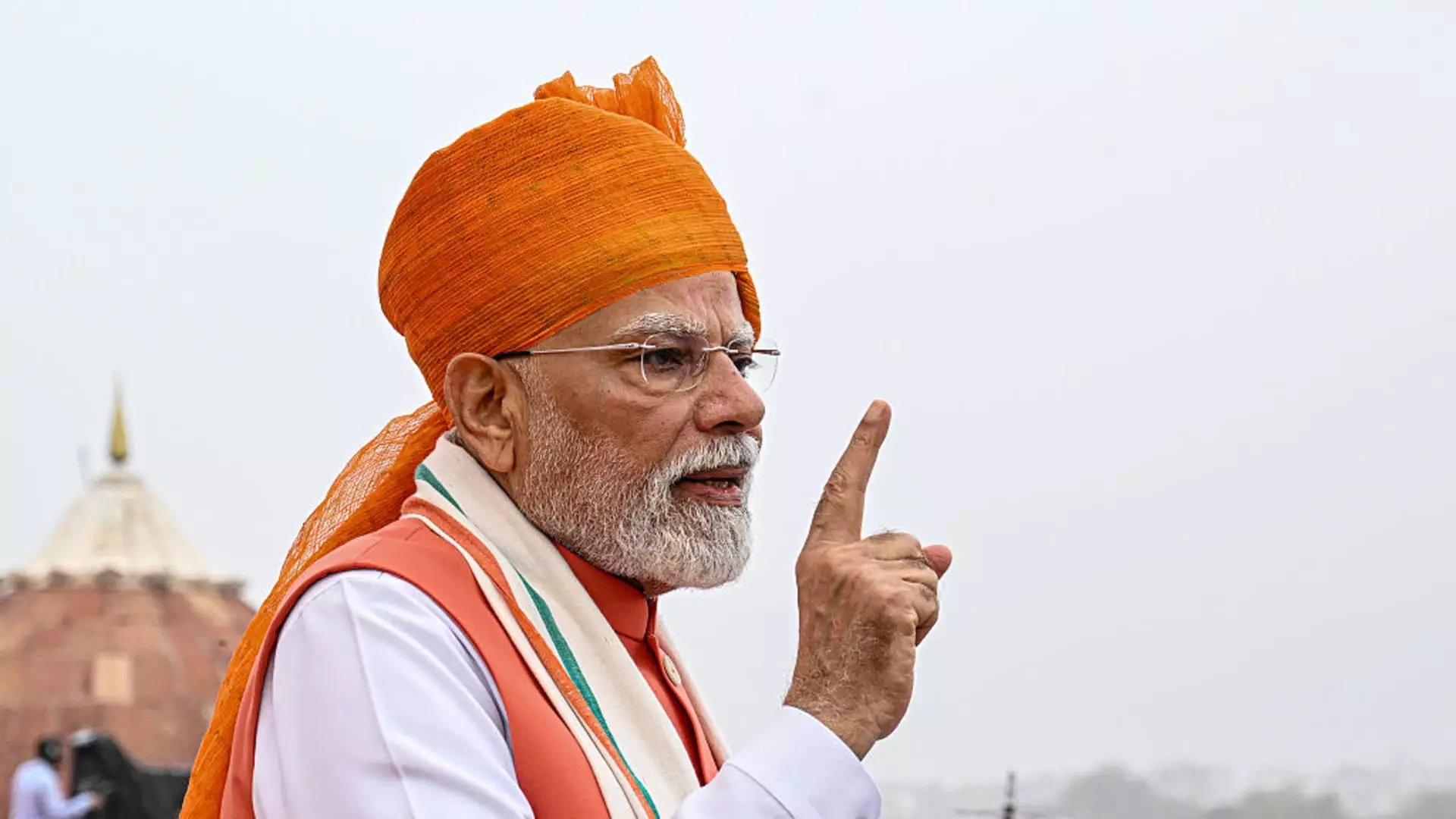India’s recent rush to overhaul its tax regime under Prime Minister Narendra Modi’s leadership represents a striking attempt to inject new vigor into an economy that has long struggled with sluggish growth and external pressures. While the government touts these reforms as a strategic move to simplify compliance and foster growth, the question remains: are these changes a genuine strategic pivot toward economic modernization, or merely superficial tactics masking deeper vulnerabilities?
The move to consolidate multiple GST slabs into just two rates—5% and 18%—is an ambitious bid to streamline fiscal administration, reduce compliance costs, and promote growth-oriented consumption. The intention is clearly to create an environment where small and medium enterprises (SMEs) can thrive without the constant drag of complex tax procedures. Yet, the real motivation might be more nuanced. Could these reductions be intended less for sustainable economic development and more to boost stock markets and appease investors obsessed with short-term gains?
This shift is packaged as a winning formula to invigorate manufacturing, logistics, housing, and consumer sectors. The auto industry, notably sluggish in recent months, appears to be the primary beneficiary, with significant stock rallies following the announcement. But this recovery could be deceptive if it relies heavily on the assumption that tax cuts alone will spark sustained growth, ignoring underlying structural challenges such as persistent inflation, wage stagnation, and global trade tensions.
Political Calculations or Genuine Reform?
Modi’s announcement can be seen as part of a broader political strategy to bolster his image as a reformer committed to self-reliance. The push for a more simplified GST system aligns well with his nationalist rhetoric of strengthening India’s economic sovereignty. However, critics argue that such rapid, sweeping reforms may lack the thorough vetting or institutional readiness to truly revolutionize the tax landscape. Historically, India’s complex bureaucracy often hampers reforms, leading to implementation gaps and unintended consequences.
Moreover, the timing of these reforms amid ongoing geopolitical uncertainties—particularly U.S. sanctions and tariffs—raises questions. The Trump-era trade policies, with their focus on protectionism and reciprocal tariffs, have already strained India’s export prospects. While domestic consumption appears to be the main economic engine, such policies risk pushing India further into a trade-constrained environment. Relying solely on internal demand as a buffer could prove perilous if global economic headwinds intensify or if domestic policies fail to address deeper inequalities.
Another concern is whether these tax cuts will translate into genuine long-term development or simply inflate asset bubbles. Stock markets have responded positively, especially in the automotive sector, yet a rising market does not necessarily translate into broad-based economic welfare. Inequality, low real wages, and declining savings threaten to undermine the intended benefits of these reforms. If households do not have sufficient disposable income, the boost to consumption may be short-lived or skewed toward luxury goods rather than essential services.
Can India Sustain the Growth Surge?
While optimistic forecasts from agencies like Deloitte and India Ratings paint a rosy picture of growth surpassing 6.5% in the coming fiscal year, many skeptics question whether such projections are realistic. The economy’s dependency on domestic consumption—a sector that accounts for over 60% of GDP—is both its strength and vulnerability. If consumer confidence wavers or inflationary pressures resurface, the pace of growth could quickly slow.
Indeed, India’s recent inflation data presents a paradox: retail inflation has plummeted to its lowest levels since 2017, promoting a sense of economic stability. But low inflation also indicates subdued demand, which may conceal underlying weaknesses. The challenge will be maintaining this delicate balance—encouraging enough spending to propel growth without igniting inflation that could negate the gains of tax cuts.
The restructuring of government levies and the anticipated easing for MSMEs are beneficial steps, yet whether these will be enough to sustain a robust economic trajectory remains uncertain. There is a risk that without addressing challenges like income inequality, urban-rural disparities, and infrastructural bottlenecks, India’s growth could remain fragile and superficial.
The Road Ahead: Risks and Opportunities
Modi’s tax reforms are cloaked in the rhetoric of modernization, innovation, and domestic resilience. Yet, beneath this optimistic veneer lies a complex interplay of risks. Policies that appear to favor the short term—such as cuts in GST slabs or tax relief for key sectors—must be complemented by substantive institutional reforms and macroeconomic stability to yield lasting benefits.
While the market’s positive response suggests investor confidence, it might also reflect a hope that these reforms will revive a sluggish engine before global headwinds intensify. The real challenge is whether these fiscal changes can catalyze sustainable demand, reduce economic inequalities, and elevate India beyond its current status of a consumption-driven economy.
The risk of over-reliance on tax cuts to fix deeper structural issues is substantial. If global dynamics turn more adverse, or if internal reforms falter, the initial optimism could quickly give way to disillusionment. For India to truly capitalize on this moment of opportunity, it must look beyond superficial tax cuts and focus on inclusive growth, infrastructure development, and equitable wealth distribution. Only then can the nation hope to navigate the perilous future with resilience.


Leave a Reply